Physical Address
304 North Cardinal St.
Dorchester Center, MA 02124
It is beyond the scope of this book to discuss all of the neoplasms that may metastasize to the skin. The more common or characteristic tumors are mentioned below. Breast cancer is the most common malignancy that metastasizes to skin, hence it is covered in its own section, 28.3 . Colon and lung cancer are also common. Breast, colon, and lung happen to be three of the most common internal malignancies in man. Prostate cancer is a common cancer, but tends not to metastasize to skin. Renal cell carcinoma, the other exception, is uncommon, but seems to have an exceptional affinity for skin, hence a separate section ( 28.4 ). Metastatic melanoma is also common in skin, and is considered in Chapter 20 .
(see Fig. 28.1A–D )
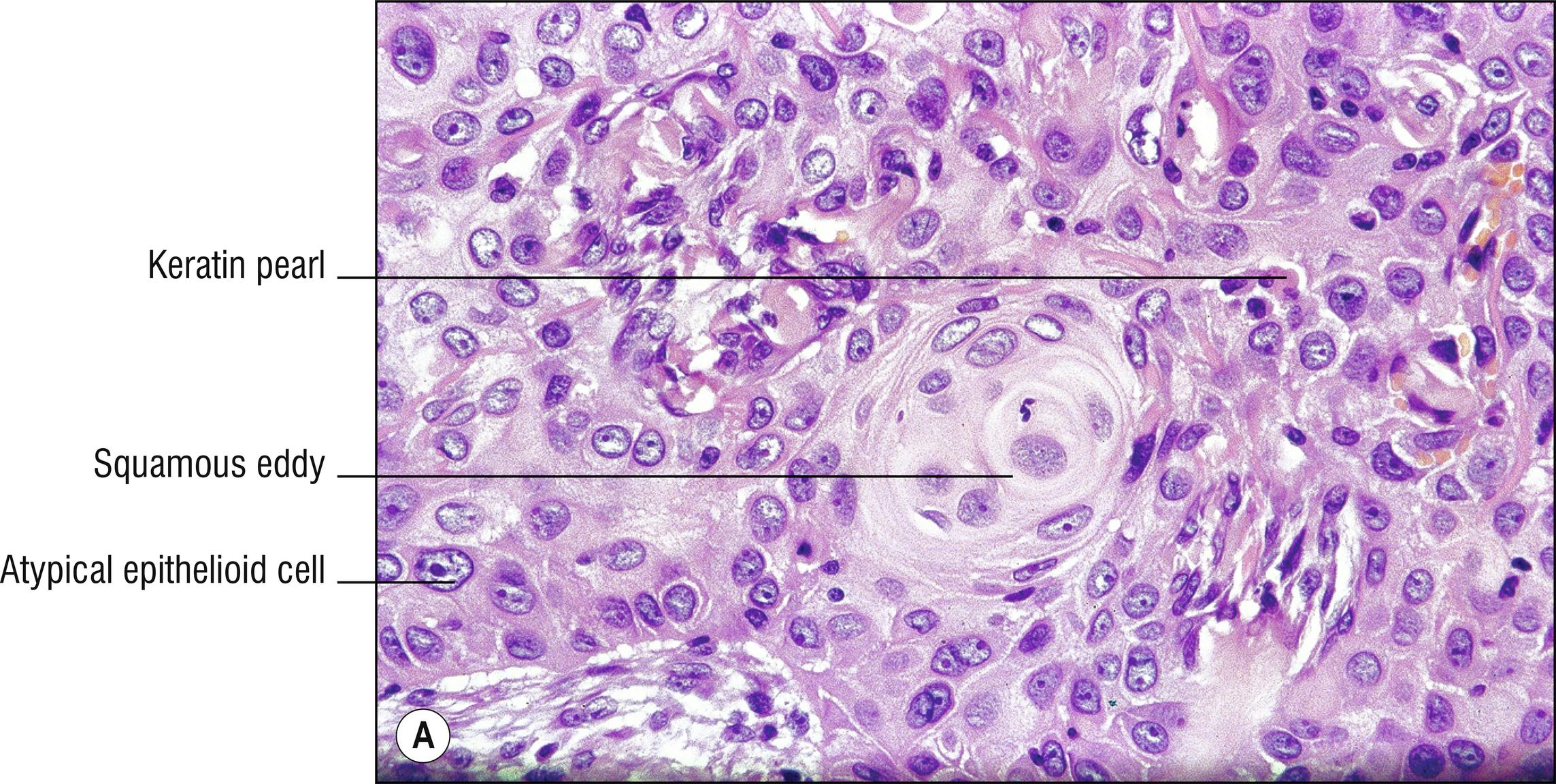
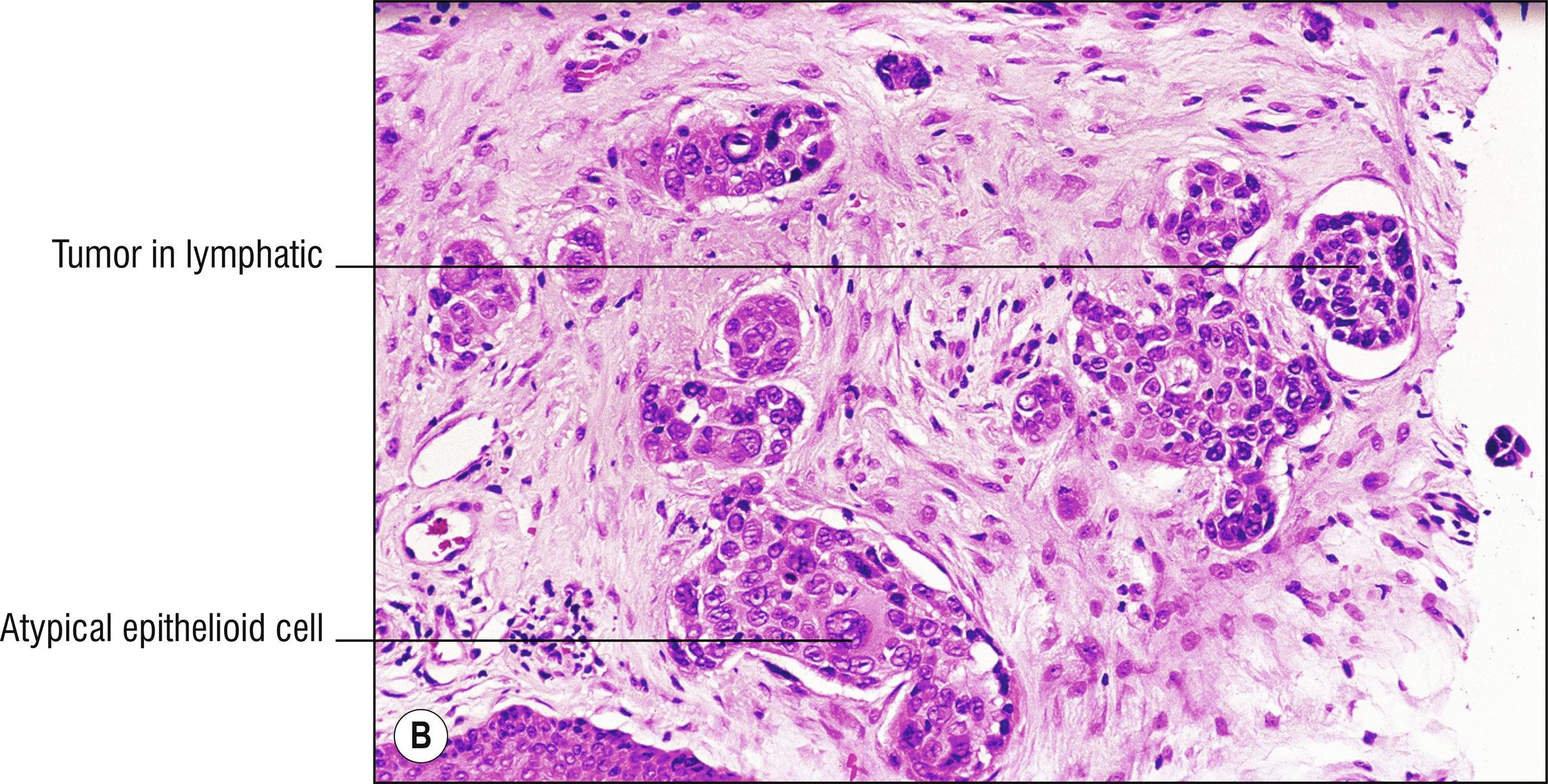
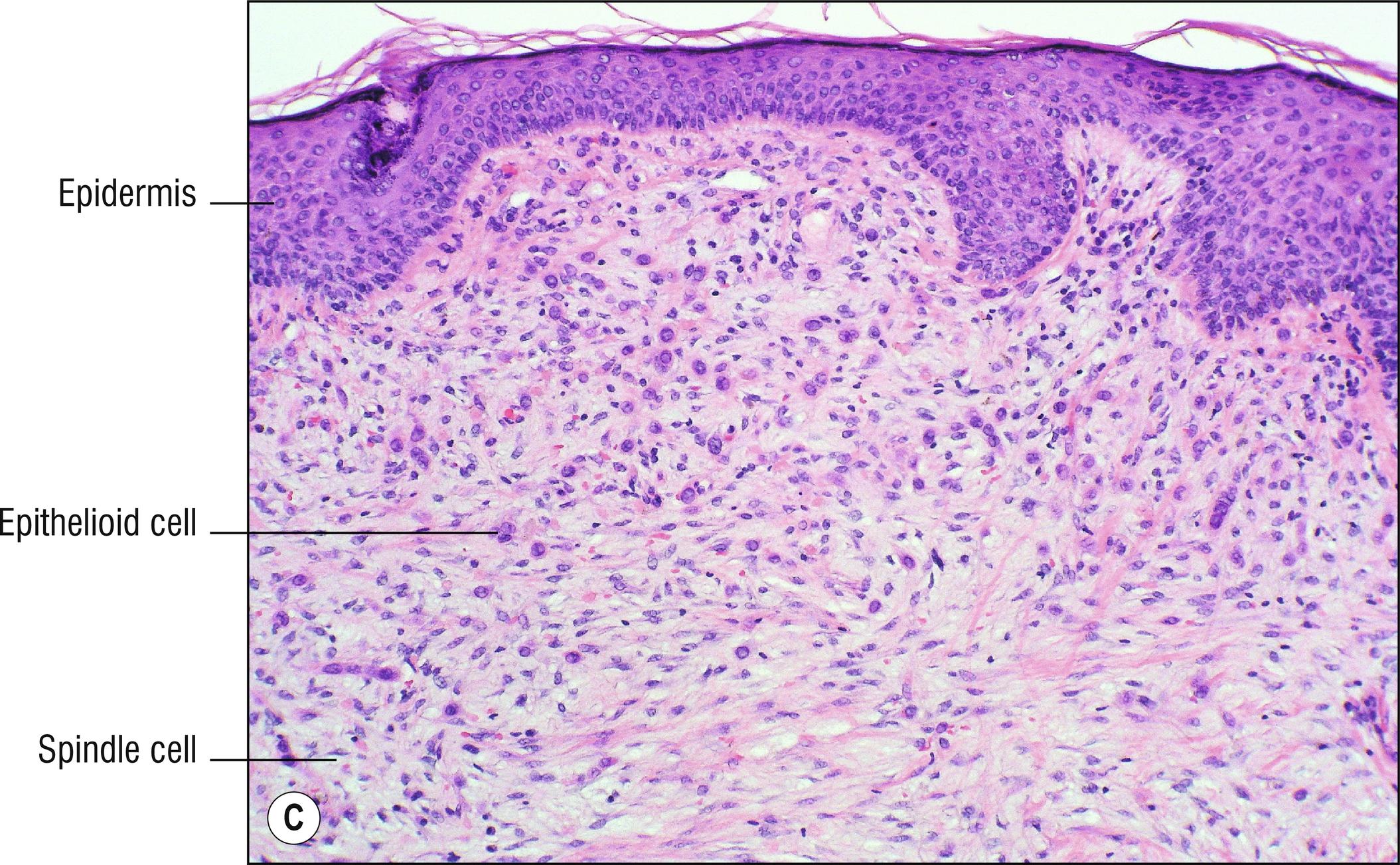
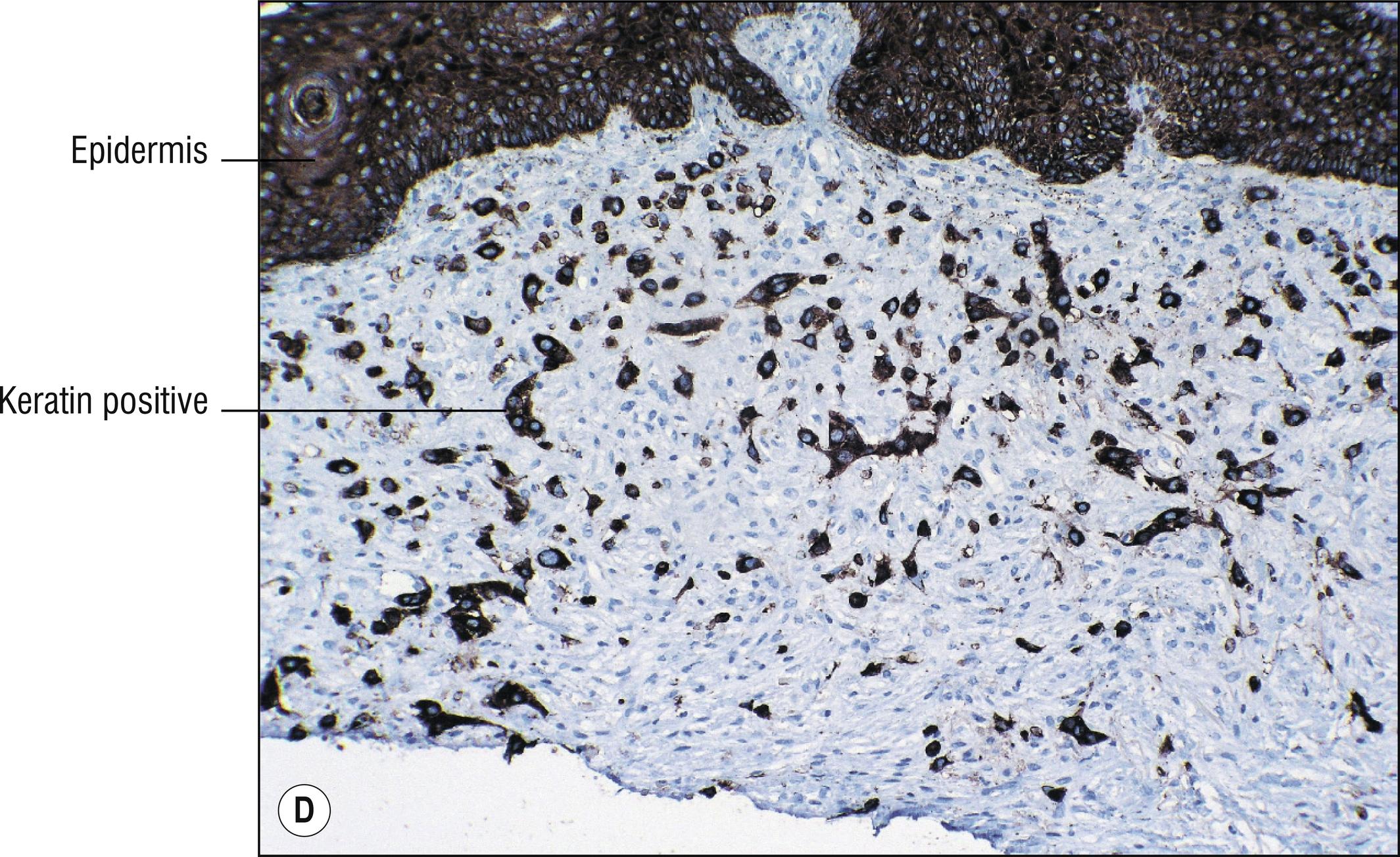
Dermal or subcutaneous nodule, most common on the trunk or scalp, most commonly originating from a lung, head, or neck malignancy.
Tumor in the dermis showing features of squamous cell carcinoma (18.11), usually with keratin pearls or squamous eddies if well differentiated, with no connection to the epidermis
Pleomorphism and hyperchromatic nuclei, increased numbers of mitoses, more prominent if poorly differentiated
Usually not possible to determine the site of origin of the tumor based upon histologic features
Pseudoglandular spaces without mucin may be due to acantholysis (1.2)
Positive staining for pankeratin, CK5/6, or other keratins are useful in difficult cases (sometimes a battery of keratins needs to be used to avoid missing a metastatic carcinoma). P40 and p63 usually positive.
Other epithelioid neoplasms (1.38) or spindle cell neoplasms (1.131).
(see Fig. 28.2A–C )
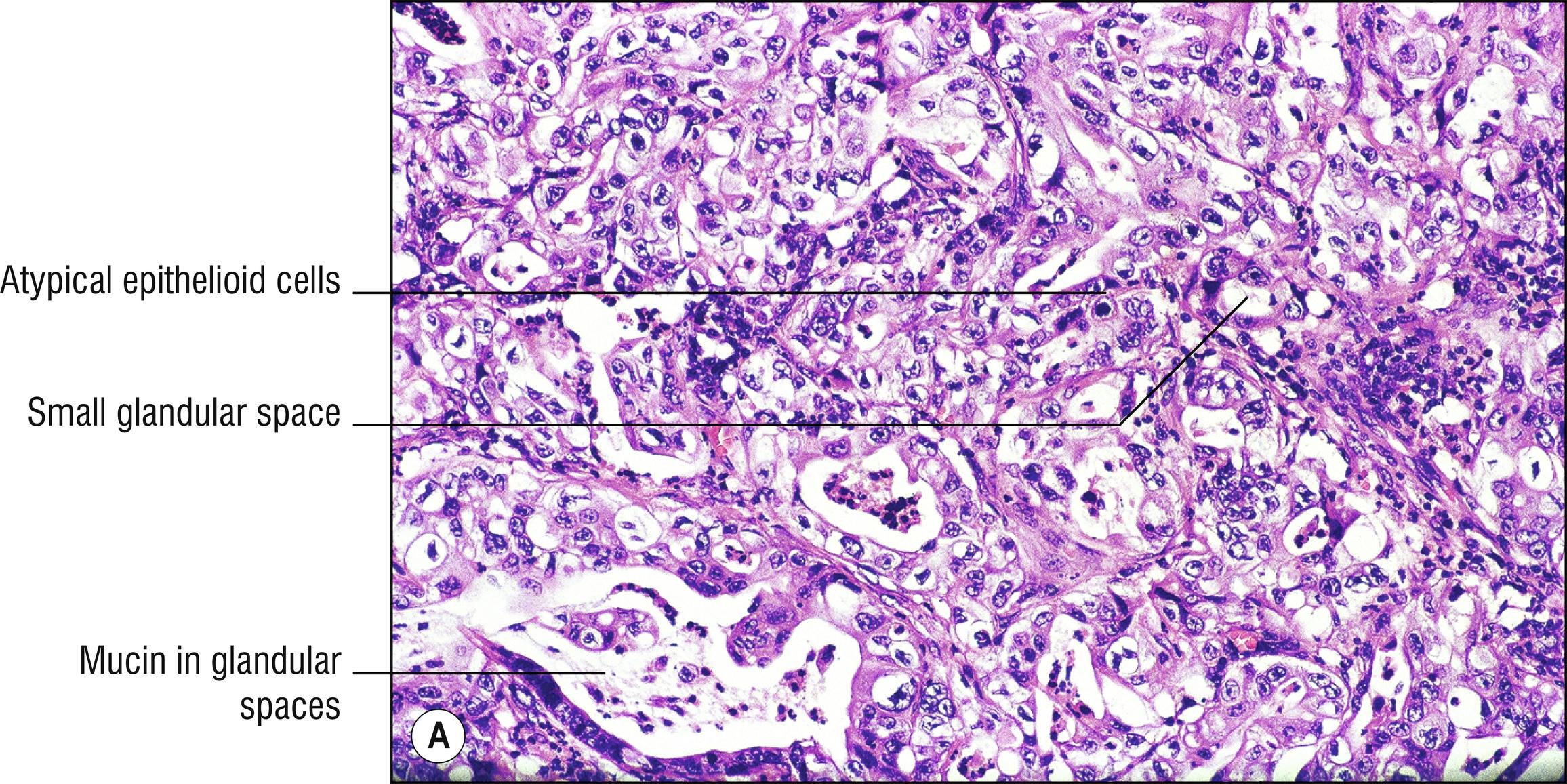
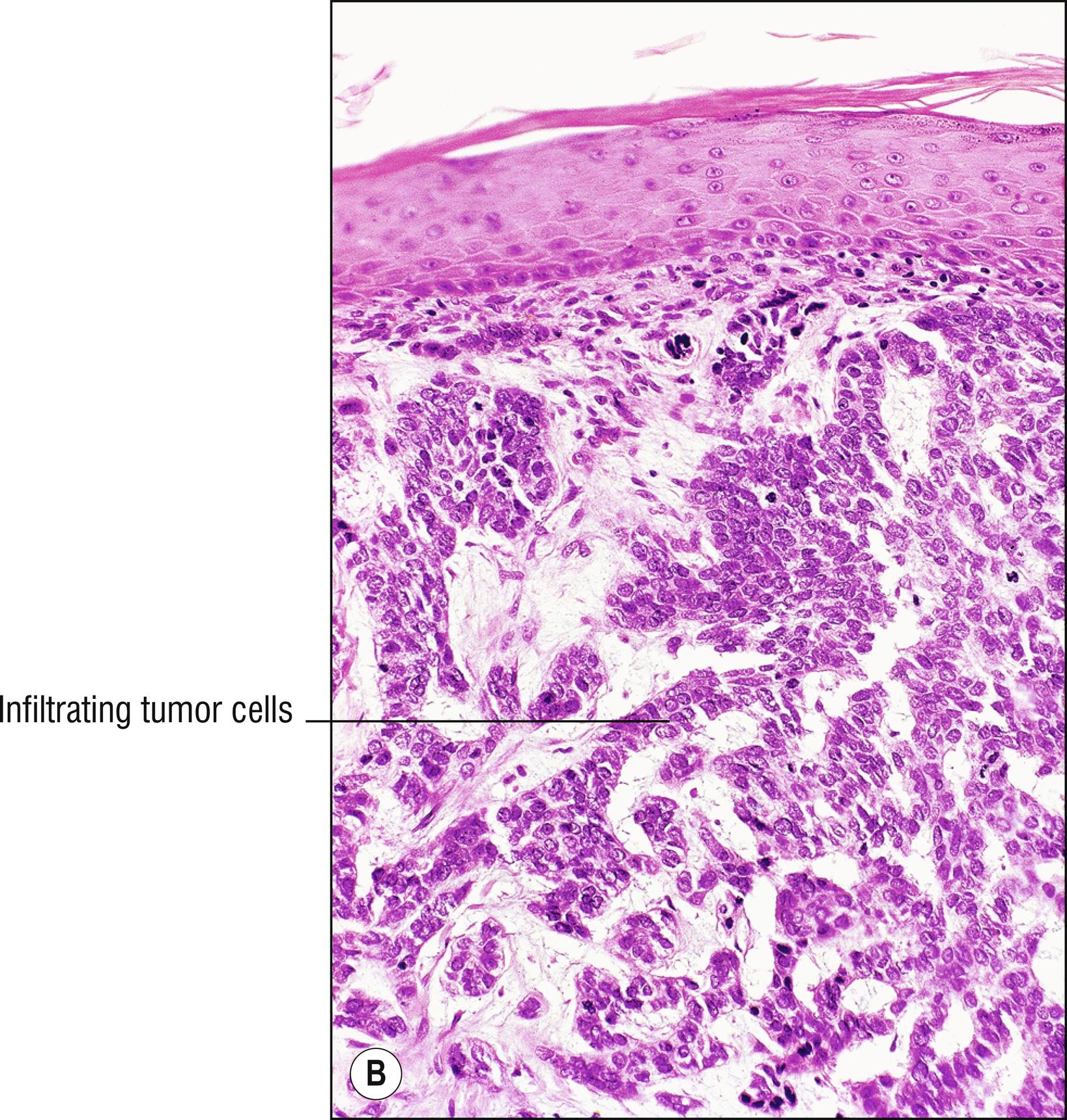
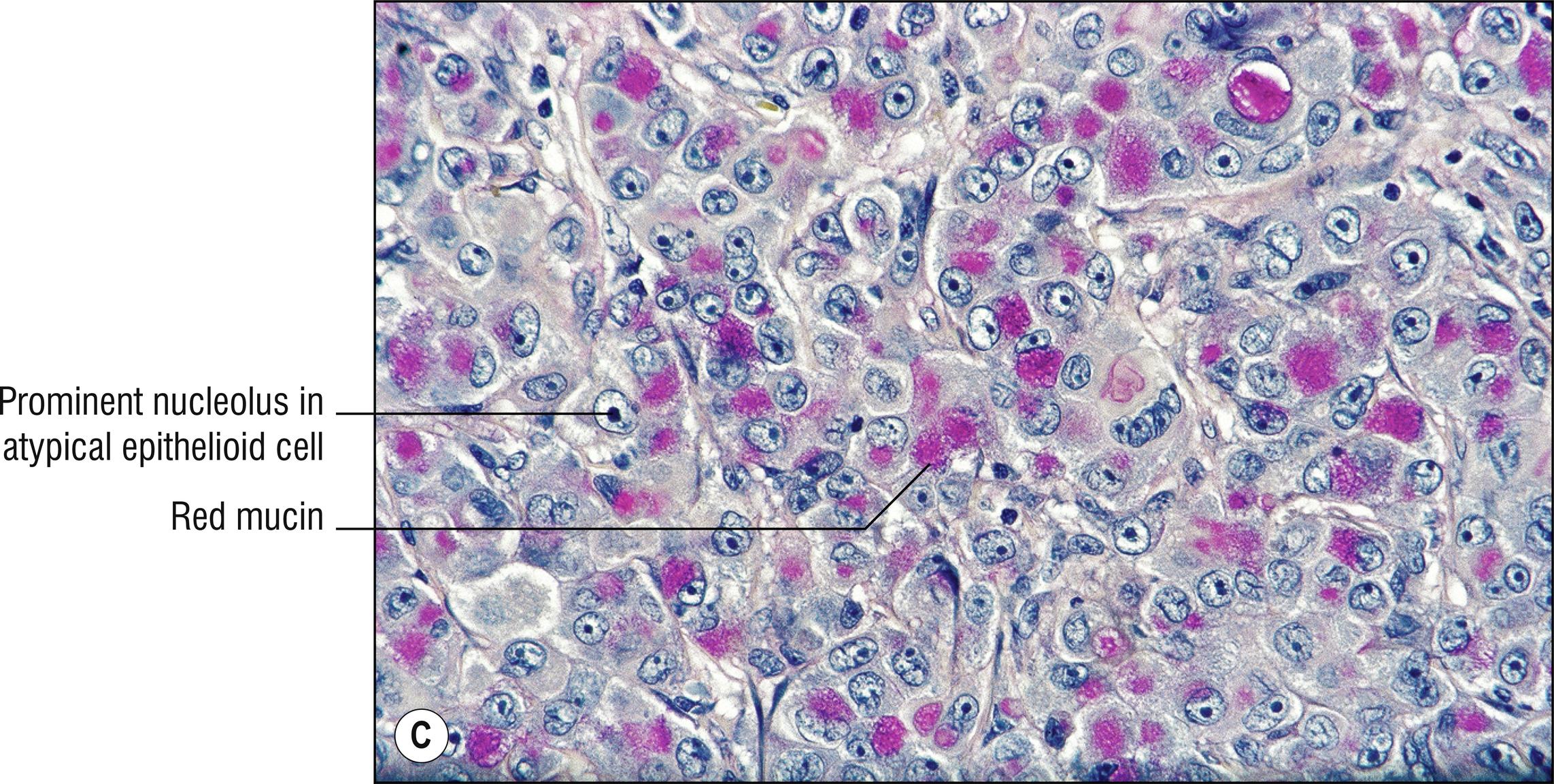
Dermal or subcutaneous nodule, most common on the trunk or scalp, most commonly originating from breast (28.3), gastrointestinal tract , or lung.
Tumor in the dermis with variable small glandular formations or signet-ring cells (if tumor is differentiated)
Pleomorphism, hyperchromatism, and increased numbers of mitoses
Usually not possible to determine the site of origin of the tumor based upon histologic features, with some exceptions
Mucin stains, such as mucicarmine, often stain mucin within the tumor cells
Positive staining for pankeratin useful to prove the tumor is carcinoma (epithelial origin rather than mesenchymal or hematopoietic) when needed. A battery of more specific cytokeratin stains, especially CK7 and CK20, can be used to predict the origin of the primary tumor, using a table of probabilities of expression of these keratins found in general pathology books, but this is not completely reliable and usually clinical work-up of the patient is needed. Colon cancer, for example, is usually CK20 + and CK7neg. Lung cancer is usually CK7 +, CK20neg. Breast and ovarian cancer are usually CK7 +. Prostate cancer is usually CK7neg
Other immunostains might help identify primary site. Consult with general pathology references, as new useful stains are constantly being developed. CA-125 is positive in ovarian carcinoma and tumors of the fallopian tube, endometrium, endocervix, and mesothelioma, but negative in breast and colon carcinoma. PSA staining is very sensitive for prostate carcinoma, and ERG is highly specific though only positive in 50%, though prostate cancer rarely metastasizes to skin. Thyroglobulin immunostain identifies papillary and follicular thyroid carcinoma and is negative in non-thyroid adenocarcinomas. CDX2 is expressed mostly in GI tract metastases, but also in some adenocarcinomas of the bladder and lung, and mucinous ovarian carcinoma. PAX-8 positivity points toward some some Mullerian/ovarian tumors, kidney, thymic, and thyroid malignancies and is negative in most others.
Primary sweat gland carcinoma or mucinous carcinoma (23.13).
Pseudoglandular primary or metastatic squamous cell carcinoma (SCC; 18.11, 28.1): keratin pearls, acantholysis in pseudoglandular areas. SCCs are usually CK18neg whereas adenocarcinomas are mostly CK18 +.
Endometriosis (29.9) and omphalomesenteric duct polyp (29.11).
Become a Clinical Tree membership for Full access and enjoy Unlimited articles
If you are a member. Log in here